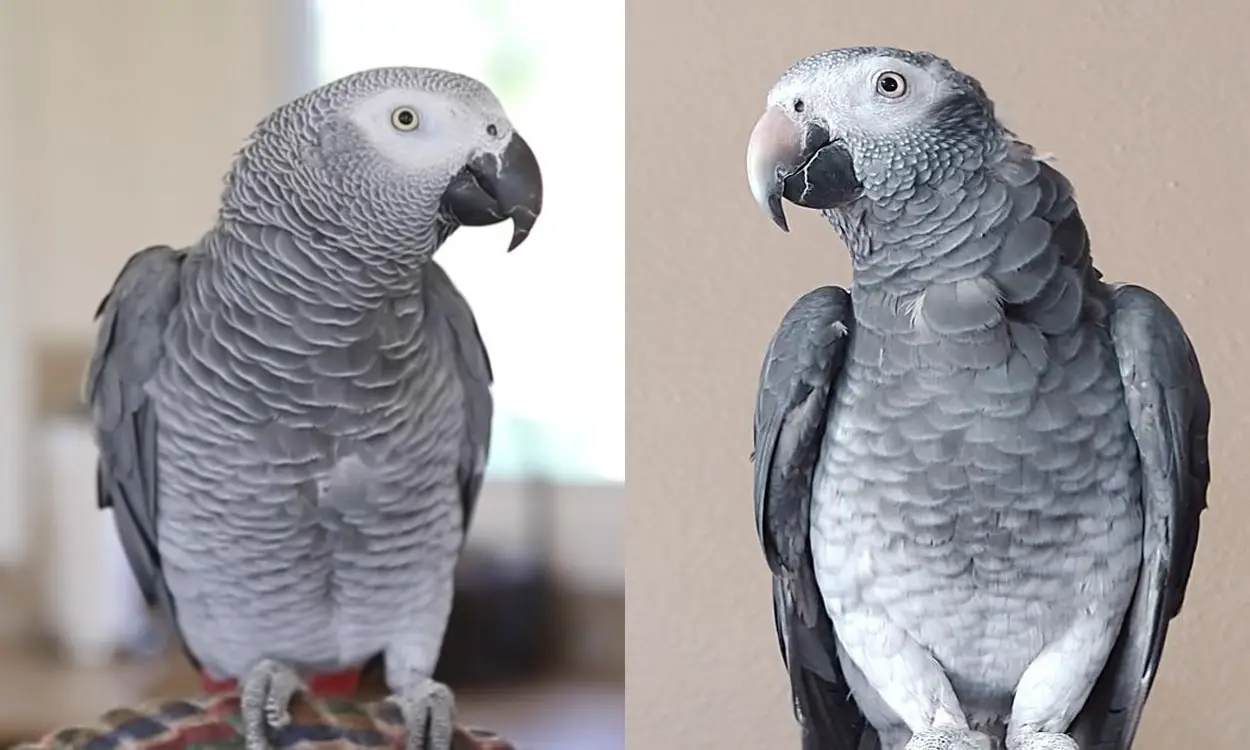Timneh African Grey vs Congo African Grey: Which Bird To Get?
Personality-wise, Timneh African Greys are more adaptable compared to Congo Grey. This complicates things if you don’t have such a specific preference. There is a lot more to explore about these birds, and getting insight into the subtle nuances can help you make an informed decision. This article helps you with just that.
Here, I will be sharing my experience of having both Timneh African Grey and Congo Grey. Though not all birds are the same, my experience aligns with the usual cases. In other words, you can rely on my words.
Related post-Amazon Parrot Vs African Grey Parrot | 9 Differences
Timneh African Grey vs Congo African Grey: What’s The Difference?
I don’t blame you if you need clarification on Timneh African Grey and Congo Grey. I was really confused but, after struggling for a while, decided to bring both home.
However, there may be other options for you. If this is your condition right now, take a look at the differences between them. It’ll help you finalize your decision for good.
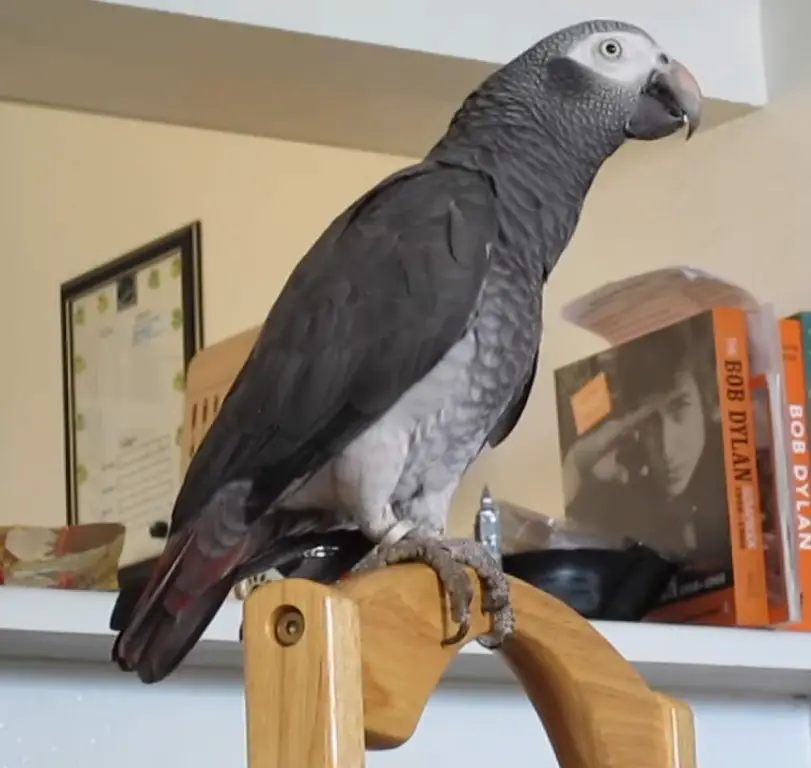
How Do They Look?
The most apparent difference lies in their feather and beak color. Timneh African Greys have darker gray feathers than Congo African Greys. The Timneh African Greys have pink patch on their beak, while Congos have a solid black color.
If you see their belly and chest, you will notice a V-shaped darker gray feather distribution in TAG but CAGs have normal gray gradients.
The about 11-inch length and the 300 grams of weight make the Timneh African Grey look like a compressed version of a Congo African Grey.
How big is a Congo African Grey? Well, a little bigger. It’s only 2 inches longer. But, the 13-inch length of the Congo African Grey appears noticeably larger when put beside a not-so-tiny Timneh Grey.
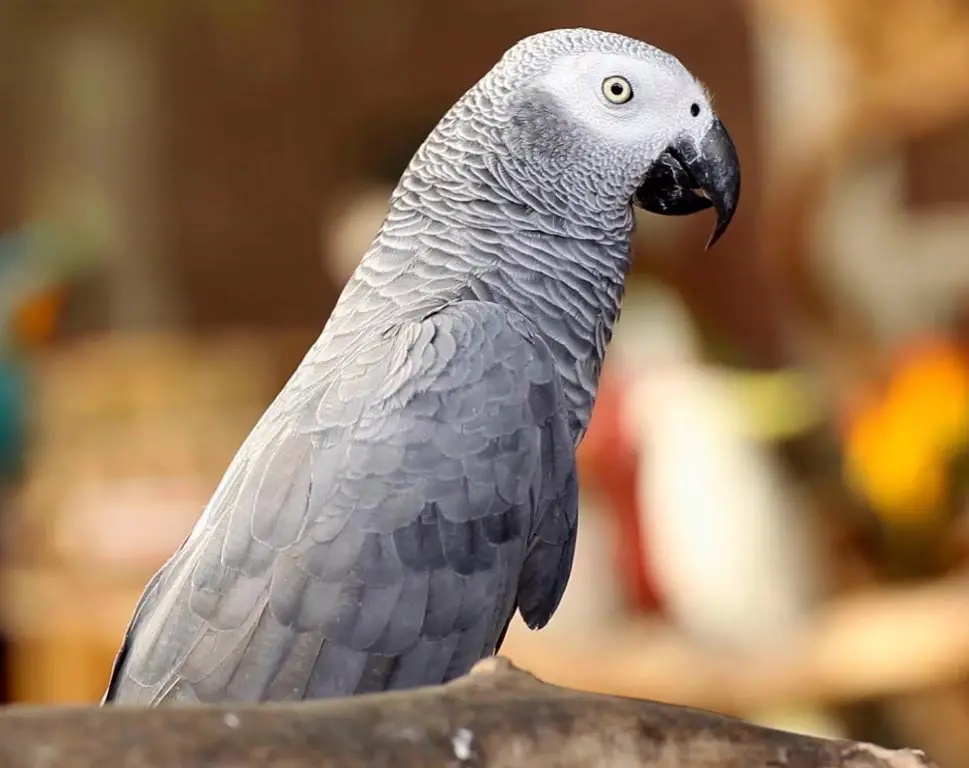
Interestingly, my Congo African Grey has a wingspan of 20 inches, which is almost twice my Timneh’s entire body length. Their size makes them look gorgeous.
But I love them both. If you want a cute little parrot, go for Timneh Grey. On the contrary, if you want the handsomeness of a bigger body length, get a longer Congo Grey. Again, the difference is not that much if you measure it with a scale, but it definitely creates a difference in look.
Apart from the size, Timnehs have a maroon-colored tail, while my Congo Grey is decorated with a bright red tail. Both look really cool to me.
What’s Their Personality Like?
Timneh Greys are usually very reserved and of a calm nature. I have noticed that they are not attention-seekers like other birds.
In fact, mine stays cool as long as I don’t approach it with my cuddly fingers. In other words, Timneh Greys are content with themselves.
I didn’t have to be an expert to figure out that Timneh Greys seek less social interaction than Congo Greys.
Congo Greys are generally more extroverted and sociable. Mine enjoys playing with toys, and it loves playing with me as well. Overall, they are attention-seekers and get sad if I don’t interact with them properly.
But, while the Timneh African Greys are more adaptable, Congo Greys are likely to take a bit more time to adjust.
I suggest Timneh Grey for families and individuals looking to get a quiet but majestic bird that entails no hassle. However, if you prefer an active social companion, opt for a Congo.
Related post-Eclectus Parrot vs African Grey: Which Bird Should You Get?
Do They Bite?
Well, all birds bite, especially when they feel threatened.
However, if I rewind a bit back in time to when I just got them, both of these birds exhibited biting behaviors. However, as time went by and they got used to me, their biting issues mitigated as well. I’m not going to lie; I had to train them to trust me. It’s pretty easy. I just put on my brave face and fed them right from my hand. Eventually, they got used to me, and now, they don’t bite at all.
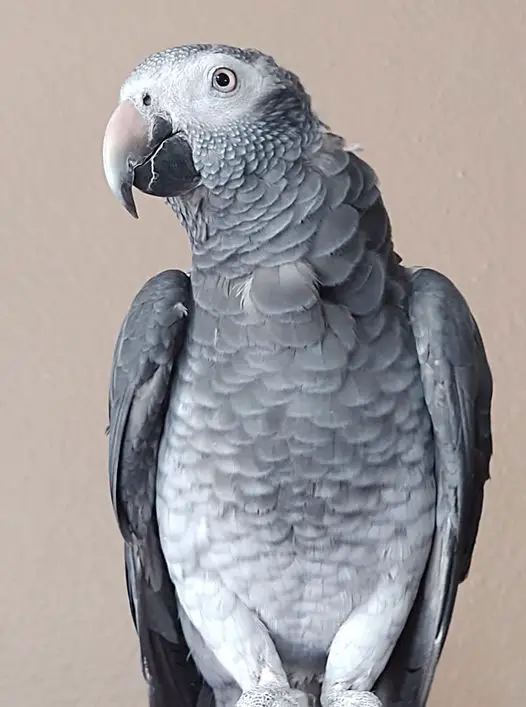
Although, if I am to scrutinize the nuance here, Congo is slightly more likely to bite than an African Grey. Mine bites lightly when it’s excited or scared. However, this only happens sometimes. In general, they don’t bite.
If you don’t want to deal with the biting issues, then Greys are a great option. But, if you want completely nothing of this extra pain, then choose an African Grey.
However, it’s best if you can know the past history of the bird before purchasing. This way, you’ll have an understanding that the bird you are bringing home is actually docile.
Can They Talk?
African Greys are famous for their high IQ, and their ability to talk is evidence of that. Both my Timneh African Grey and Congo Grey are chatterers. The Timneh African Grey, being a bit shy, talks less than my chatty Congo Grey. My Timneh is a cupboard talker, I guess! He loves to talk when he is alone in the room. Several Timneh owner said the same thing, they talk more when alone.
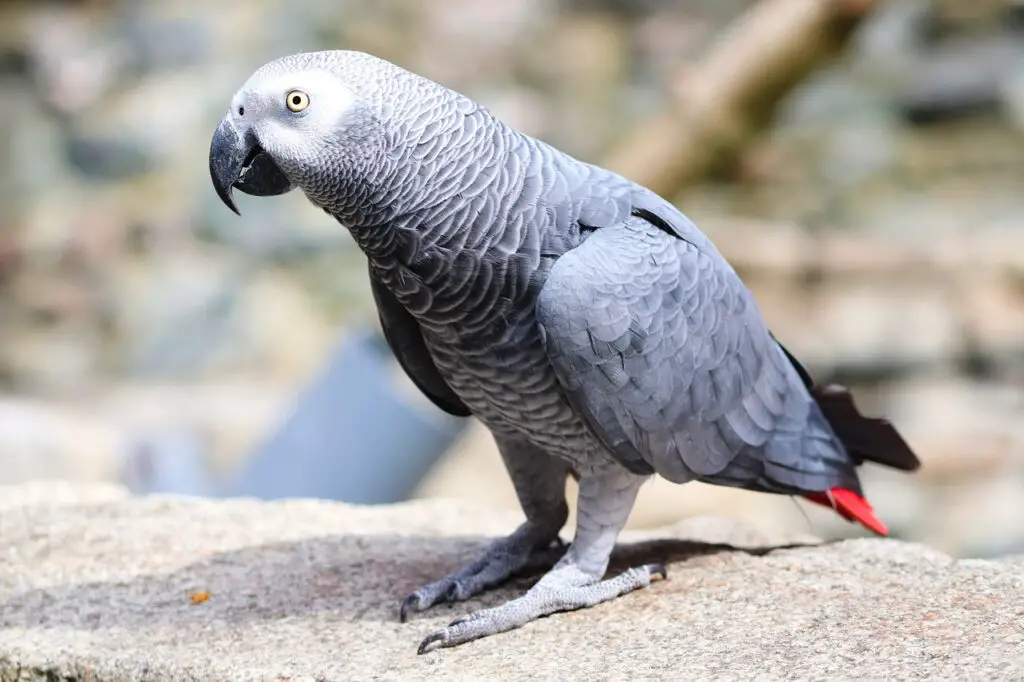
Despite having the same level of talking ability, I have noticed that my Congo African Greys are capable of adapting to more vocabularies and sounds.
All in all, if you just want a bird that can talk, both are fine options. However, if you want to teach them to talk first, I recommend a Congo African Grey. They learn fast. The Congos wins the vote for talking ability!
Related post-Cockatoo vs African Grey: Which is the Best Bird for Your Home?
Do They Pluck Feathers?
Timneh African Greys are sweethearts compared to Congo Grey when it comes to feather plucking. Well, all birds pluck feathers when they are stressed, bored, or suffering from any health complications. For example, allergies can trigger a bird to pluck their feathers.
Though it’s not a universal case, my Congo Grey has a bad habit of plucking its feathers. At the same time, my Timneh African Grey is not a culprit of this folly.
My suggestion would be to check out the bird’s history if you suspect that the bird isn’t particularly looking good feather-wise.
Are They Good Around Children?
I don’t recommend Congo Grey for families. Why? Because no matter how outgoing and social Congo Grey is, they are a one-person bird.
Mine just clings to me and doesn’t play with kids, no matter how much they try to convince the bird. In fact, it even tried to attack a kid once.
On the other hand, my Timneh African Grey is a calm sweetheart. It doesn’t make a fuss even when the kids pat it.
However, my recommendation is to keep kids away from such big birds. No matter how calm, sweet, or social they may be, they are animals, after all. The sharp claws and beaks can hurt delicate children.
Another issue is that both Greys do not like fast movement. It stresses them. So, toddlers around them will cause stress. Stress is a thing that you want to avoid if you are a pet parrot owner.
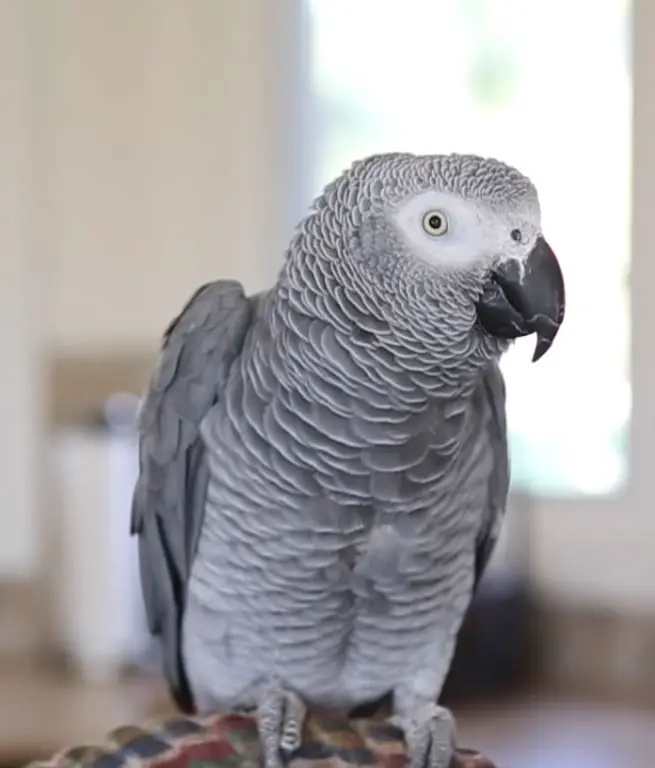
Are They Loud?
As you have probably already guessed, Timnehs are quieter birds compared to Congo Grey. Timnehs are one of the calmest African Greys out there, and mine is particularly quiet. But their quietness doesn’t mean absolute silence.
It talks and makes slight happy noises when it sees me.
On the contrary, the extroverted Congo African Greys are louder and much more vocal. They can produce loud calls when I don’t pay them an adequate amount of attention.
But it’s not that their voices are intolerable. I can live with it, and you won’t have any problem with it either.
What Do They Eat?
I feed Nutri Berries to my Timneh Grey, but the Congo Grey doesn’t like them much.
However, overall, I can’t complain about their food habits. They are typically good eaters. But each of these birds has its own preferences, and chances are the case will be the same for your bird as well. You can ask the previous owner about what they eat and follow that dietary plan.
Although, if you don’t end up with a stubborn bird, things can get easy for you. This was the case for me, and thanks to this blessing, I could build up the food habits of my bird.
In general, if you are to try out different foods, I recommend high-quality pellets, fresh fruits, and vegetables. These are common foods that almost all African and Congo Greys love.
How Well Can They Mingle?
Ironically, despite being significantly less social, Timneh African Greys are much quicker to adapt to a new environment compared to an extroverted Congo Grey.
But, from afar, it would be fair to say that both birds actually adapt to a new environment with patience and gradual acclimatization.
My calmer Timneh African Grey became my friend on the very first day. But the Congo Grey took around a week to adapt to me as the new owner. Although this is how the birds behave in most situations, the matter can be totally opposite in some rare cases.
Related post-How Do You Tell if a Parrot Likes You?
Are They Aggressive?
I don’t want to make any basic distinction here, and I’m saying that both Timneh and Congo Greys are prone to displaying aggressive behavior.
But I have to admit that the Timneh Greys are less likely to show violent behavior. My Timneh Grey didn’t throw a tantrum even once, but the Congo Grey did on multiple occasions.
The reason is actually the old one: attention. If I don’t pay proper attention to it, my Congo Grey gets mad.
If you are not someone who wants to spend a lot of time playing with their pet bird, then Congo Grey is not for you. In this case, it would be better for you to opt for a Timneh instead.
But, despite everything, I have a strong bond with both of my birdies. However, though it doesn’t sound right, my Congo is actually closer to me. Congo Greys are, as already mentioned, one-person birds. Thus, they prefer to be intimate with their owner.
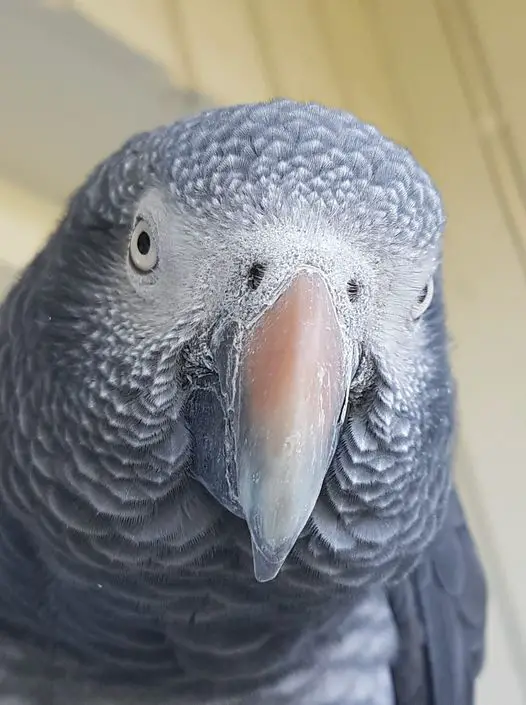
Can They Be Trained?
There actually needs to be more mention-worthy differences at this point. Both of these birds are intelligent enough to grasp the new tricks you teach them. I have already discussed the matter of talking ability before.
Apart from that, I was able to teach both these birds different physical tricks and complete problem-solving tasks, and I did that with quite ease. So, I actually don’t think you will feel any difference if you choose either.
What Health Concerns Do They Pose?
Unfortunately, African Greys are notorious for their excessive feather dust. I would not keep either of these birds in the same room as a person with severe asthma.
If you or any member in your house has asthma, then re-evaluate your decision. It’s actually alright if they have mild asthma. But in the case of severe conditions, don’t bring an African Grey, no matter if it’s Timneh or Congo, home.
How Much Do They Cost?
To be honest, both of these birds are costly. I bought my Timneh African Grey for $2,000, and the Congo Grey cost me more than $1,500. And now, annually, I have to spend around $1,000 for each bird.
The annual maintenance cost includes food, toys, vets, and some other basic needs. These two birds are particularly voracious, and this contributes to the excess maintenance cost.
If you were hoping to get a parrot at a moderate cost, then you are still looking for a chance here. No matter what option you choose between these two birds, you will have to invest a significant amount of money. However, I can guarantee you that it’s worth it.
That’s a Wrap!
No matter how many differences and descriptions I put before you, making the final decision ultimately relies on your preferences and lifestyle. From my experience, both are great birds. However, they are obviously only suitable for some.
If you are someone who loves to work in peace and enjoys spending quality time with family and friends after work, then Timnehs are for you. These birds will not bother you with their noise or their need for attention.
On the other hand, if you don’t like calm pets and want an active bird roaming around your house instead, then bring home a Congo African Grey. This bird will become your best bud and will play with you all day long.
Ultimately, no matter what you choose, it all comes with some other traits. If you have read this entire article, you now know what you are getting into when you choose either of these options.
You might be interested to other parrot species too-
Are Macaws Good for Beginners? Everything You Must Know Before Deciding
